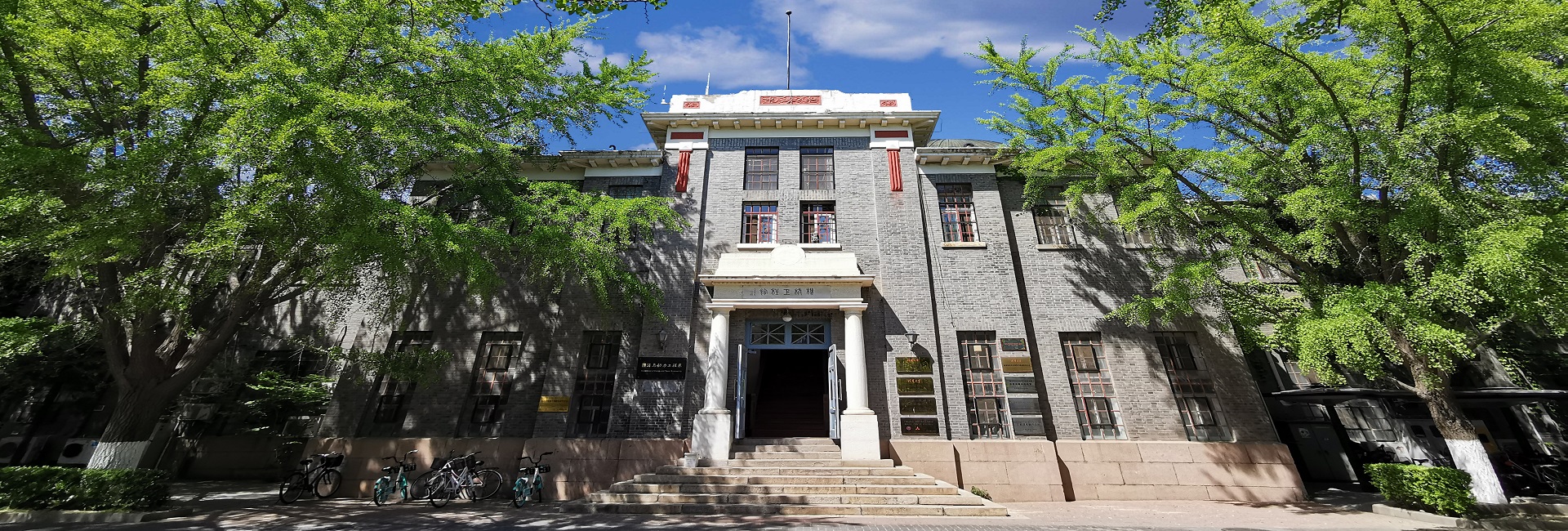报告题目:Electrochemical Energy Storage/Conversion and CO2 Electroreduction: Challenges and Perspectives(电化学能源存储/转换和CO2电还原---挑战与展望)
报 告 人🤳:Dr. Jiujun Zhang (张久俊博士);加拿大国家研究院首席科学家/教授,国际电化学会(ISE)会士▫️🎤,国际电化学能源科学院(IAOEES)主席兼总裁
报告时间📢:2015年9月28日(星期一) 上午9:30
报告地点:热能系系馆报告厅
主 持 人:史翊翔 副教授
ABSTRACT🫴🏼🌉:
In this presentation, various kinds of electrochemical energy storage and conversion technology including batteries, fuel cells, supercapacitors, hydrogen generation, as well as CO2 reduction are reviewed in terms of their characteristics, current technical statuses, advantages, challenges and perspectives in practical applications. Several opinions are given as follows: (1) Electrochemical energy storage and conversion technologies will be one of the central components in the future clean sources-based smart grids (stationary power) and continuously play a key role in mobile powers, (2) Fuel cells, lithium- and zinc-air batteries, lithium-sulfur battery, as well as high energy density supercapacitors for automobile applications are still the frontier research and development in the coming decade, (3) For automobile applications, PEM fuel cells are still believed to be a long-term sustainable solution rather than batteries or hybrids, and (4) Increasing energy/power densities, durability as well as reducing cost are still the cutting-edge research and development directions, in which exploring and developing cost-effective nano-structured electrode/electrolyte materials are key steps toward the success. In facilitating the continuing efforts, several research directions in electrochemical energy storage and conversion technologies are also suggested in this presentation: (1) Exploring and developing cost-effective nano-structured electrode catalysts and durable membranes for automobile PEM fuel cells, (2) Exploring and developing nano-structured catalysts and their associated bi-functional cathode (O2 reduction reactions) to significantly improve cycle life for metal-air batteries in particular Li-air and Zinc-air batteries, (3) Exploring and developing novel materials-based electrodes to significantly improve cycle life of Lithium-sulfur batteries, (4) Exploring and developing nano-structured electrode & electrolyte materials (hybrid and composite materials and wide-potential-window electrolytes to significantly improve energy densities of automobile Supercapacitors, and (4) Exploring and developing nano-structured photoelectrolysis materials to significantly improve photo-electricity conversion efficiency and material stability for hydrogen generation through solar water splitting and CO2 electroreduction.
Regarding CO2 electroreduction, the technical strategy, advantages, challenges and perspectives of CO2 emission reduction are reviewed in this presentation. This review discusses that there are 4-5 Giga-tons of extra CO2 released into atmosphere by human activities, causing Earth’s carbon unbalanced, creating negative environment issue, and affecting life’s sustainability. With respect to this, the necessity of CO2 emission reduction is emphasized. This talk also indicates that among different CO2 emission reduction technologies, electrochemical reduction of CO2 to low-carbon fuels has been recognized as a feasible and effective approach. For electroreduction of CO2, many types of low-carbon fuels such as carbon monoxide, formic acid/Formate, oxalic acid/oxalate, formaldehyde, methanol, methane, ethylene, ethanol, etc., can be produced, however, producing formic acid/formate may make more sense due to its higher energy efficiency and aqueous electrolyte usage. This has been demonstrated by current state of technology in Canada. This presentation also discusses the major advantages of CO2 to formic acid/formate, which are (1) the produced HCOOH/HCOO- can be stored as a fuel for flexible and removable usage; and (2) in the production/storage/usage cycle, CO2 emission reduction can be realized. The largest challenge for CO2 electroreduction technology is the low durability of electrocatalysts, therefore, developing more active and durable electrocatalysts is the largest effort currently. Regarding sustainable fuels, this talks indicates that further exploring photoelectrochemical cells for CO2 reduction should be the new effort, in which exploring and developing nano-structured photo-electrode materials is the largest effort to significantly improve photo-electricity conversion efficiency.
报告人简介🙎🏼♂️:
张久俊博士具有30多年的电化学研究资历/教授/项目经理3️⃣,分别担任中国/美国/加拿大核心资历团队负责人。同时兼任加拿大英属哥伦比亚大学/滑铁卢大学和中国北京大学/武汉大学等13所大学兼职教授职位🤸。1978 年考入北京大学化学系💁🏻♂️➜,分别获学士和硕士学位,1988年于武汉大学获电化学博士学位,1991至1993年于美国加州理工学院(California Institute of Technology)进行燃料电池催化剂的博士后研究,后加入加拿大约克大学(York University) 及英属哥伦比亚大学 (University of British Columbia) 从事非铂电催化剂和传感器开发。1998年作为高级科学家加入世界顶级燃料电池公司加拿大Ballard Power Systems Inc, 从事质子交换膜燃料电池(PEMFC)研究,并担任团队和项目经理🔞→。2004年作为电化学和燃料电池专家之一受任于加拿大国家研究院燃料电池创新研究所(NRC-IFCI)。自2013年起被评为加拿大国家研究院首席科学家, 2014年起被评为国际电化学学会会士(Fellow), 并于2013年起担任国际电化学能源科学院(IAOEES)主席兼总裁。 至今已发表论文400多篇 (包括同行评审论文230篇)👩🏻🦰,被引用16000多次,编著15本专著🤘🏼,36部书章节和110多场口头演讲(邀请报告50多次),获16项美国及欧洲专利和撰写90多份科学技术报告。其研究领域涉及物理化学👮🏽♂️、材料学📹、电化学、电分析、电催化、电池🛅、锂离子电池、燃料电池、超级电容器🕉、光电化学以及传感器等各个方面。目前主要集中于纳米材料(电极材料和电极催化剂)🏉,纳米技术在电化学能源、转换和存储方面🐑,包括燃料电池🚑、电池, CO2电还原以及超级电容器等方面的研究开发。张久俊教授作为大会主席/副主席/组委主持组织过多次重要国际学术会议🧖🏿🕠。现在是知名国际丛书(CRC press, Springer, Elsevier)及期刊的主编和编委, 加拿大国家自然科学与技术等重要基金评委/加拿大明星教授评审委员会评委,国际电化学会/美国化学会/美国电化学会,和加拿大化学学会会员,国际电化学能源科学院理事🧑🏻🌾,同时还对担任美国/欧洲/澳大利亚等国著名科技基金及中国自然科学奖励评审😘🧓🏼。
 加拿大国家研究院-张久俊教授情况介1.pdf
加拿大国家研究院-张久俊教授情况介1.pdf
 张久俊教授情况介2.pdf
张久俊教授情况介2.pdf
